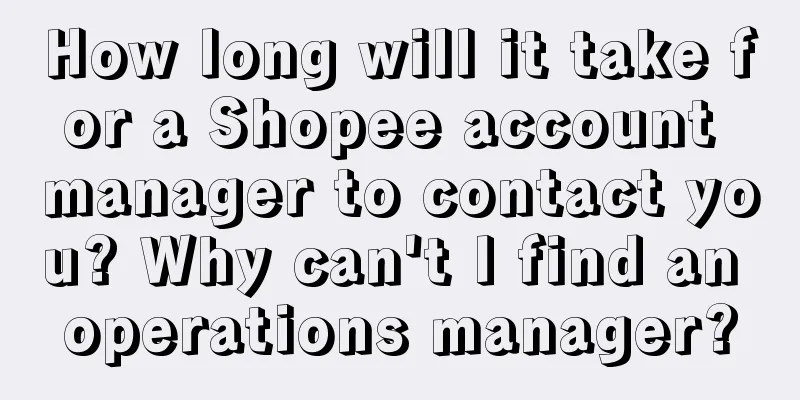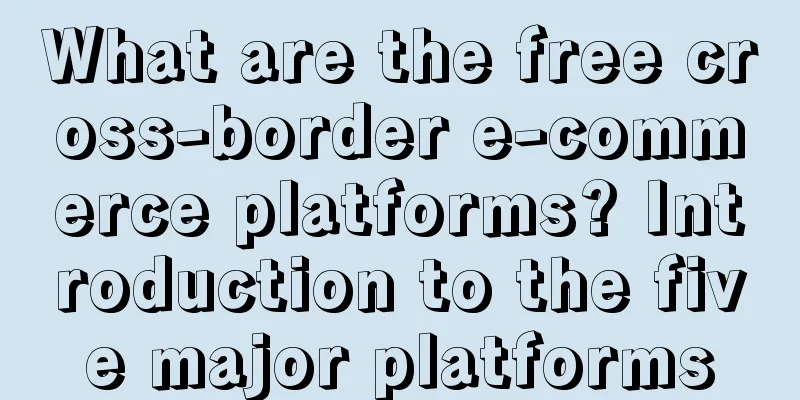What we really need is "profitable growth"

Several obvious changes were observed this year: Few companies are willing to lose money to gain publicity for the 618 and Double 11 campaign reports; the media no longer praises a newly emerging industry or brand as a god, and is cautious and evasive in its wording about new species; when investors call you, they may not want to invest money, but to submit your resume... I think this bleak situation cannot be blamed entirely on the external environment, but also because in the past we have always put growth before profit. In the blink of an eye, it is Q4, and almost all physical companies have figured out one thing: without profit growth, it is all hooliganism. How to create "profit-based growth"? This should be the key topic in Q4 this year and even in 2024. I would like to share my insights from four aspects. 1. Market growth: Learn to discover new consumption scenarios from market gapsFor all highly competitive industries, profits have a time window. Simply put, when the market gradually becomes saturated and competitors begin to roll back, profits will continue to be cut. But at the same time, I found an interesting phenomenon: many big brands that survived the competition have a rare ability. They can always find unknown gaps in a seemingly saturated market, thereby creating new profit points, such as Coca-Cola. I don't think there is any beverage market in the world that is as saturated as Coca-Cola. The Coca-Cola category has a long history, and it has entered all the channels it should enter and covered all the regions it should penetrate. However, Coca-Cola can achieve profitable growth every year, which is worth careful consideration for every new consumer brand. A few years ago, Coca-Cola, whose growth was slowing down, proposed a new strategy called "coke with meal", planning to penetrate the "side meal" scenario. Why "accompaniment"? Because when consumers come to the shelves of supermarkets, they can easily compare the price of Coke with the prices of surrounding drinks, and compare the price of this store with the price of another store. Therefore, it is difficult for offline beverage sales to take into account both profit and growth at the same time. But when we walk into a restaurant to consume, because there is no shelf comparison, people assume that drinks can be sold at a higher price and Coke can get a higher profit. This year, Coca-Cola and Tencent Video jointly created a food variety show "Friends Invite Me to Dinner". The emergence of this program is more in line with the "dinner companion" culture of today's young people. In addition to regular product placement, Coke also asked the producers to set up cooperative stores in six cities including Beijing, Chengdu and Wuhan. Maybe you don’t know that by the second quarter of this year, there were already 8.636 million catering outlets in China! Coke relied on these catering outlets that penetrated into the capillaries of cities to obtain higher product premiums and continued to grow in hidden corners. In fact, as early as 2016, Coca-Cola joined forces with 1,700 catering outlets to launch the "pay the bill and get a Coke for free" campaign; in 2019, Coca-Cola cooperated with McDonald's and Burger King to launch interactive coupons and takeaway discount activities, focusing on the "Coke + fast food" CP; in the summer of that year, Coca-Cola cooperated with more than 2,000 stores, focusing on the "Coke + crayfish" CP. Like Coca-Cola, Jinjiu has also focused on the consumption scenario of being a side dish for meals in recent years. Last year, Jinjiu customized a documentary called "The World Has Rivers and Mountains, and the Taste of Freshness". In the documentary, Jinjiu always appears together with the fragrant snails from Ningbo Xiangshan Port, the swimming crabs from eastern Zhejiang, and the stewed mutton from Dabie Mountain. While other liquors are competing for cultural and social scenes, Jinjiu is opening up a new scene of "nourishing" in autumn and winter. Because Jinjiu contains health-promoting medicinal herbs, it can invigorate blood circulation and warm the stomach. It is naturally suitable for pairing with warming foods and can neutralize the damage of cold foods. Therefore, in this program, Jinjiu put forward the slogans "Lamb and Jinjiu warm the body, heart and stomach" and "Seafood and Jinjiu complement each other in warm and cool ways, a good pair." Often, when we complain that "the market is saturated and our competitors have squeezed out all our profits", it is often because we have lost our business imagination. When we compete for market share only by product category, we cannot see where the incremental growth and profits are. Only if we break the narrow definition of the market in the past and see market gaps that our competitors cannot see, like Coke and Jinjiu, can we continue to create profitable growth. Let me give you a few more examples so that you can understand. Recently, Haidilao has found a new consumption scenario, namely the "After Party" after chasing stars. As soon as the concert is over, Haidilao will drive a bus to pick up fans to eat hot pot in the restaurant. Now Haidilao has become the Jerusalem of star-chasing girls. Wanglaoji cleverly found the auspicious culture and the occasions for praying for good fortune and luck, and would launch customized blessing cans during such occasions as the Spring Festival and the college entrance examination. Heineken did the opposite and launched non-alcoholic beer. The product was placed in major parking lots, emphasizing that drivers could drink it. If you still can’t find a new market gap, a simple idea is to reverse-engineer your business from the vertical content of the media. These contents are naturally vertical to a certain group of people with certain interests and often contain a large number of segmented consumption scenarios. For example, my family and I were watching "Heart Signal 7" recently, and there were a lot of notes on social media about what the male and female guests wore when they went on dates. Brands like clothing, accessories, perfumes, and cosmetics can completely market around the small scene of "dating". 2. New product explosion: Selected IP + product discounts + channel linkageIn the past few days, Luckin Coffee and Moutai's co-branded coffee "Jiangxiang Latte" has been all over the WeChat Moments. Luckin Coffee can be all over the WeChat Moments because it is "associated" with Moutai and has absolute scarcity. But more importantly, the sales volume of this single product has exceeded 100 million, breaking Luckin Coffee's single product sales record. The fact that Luckin's joint products are selling well is not a coincidence. It is because Luckin has always been pursuing this strategy of launching new products. This year, Luckin Coffee also collaborated with the popular anime "The Dart Man" to launch the "Kunlun Boiled Snow Latte". Luckin Coffee invited users to create new cups, cup sleeves, and handbags based on the IP of "Dart Man". A large number of anime fans participated in the co-creation of peripherals. In addition to creating a hot topic, it also brought Luckin Coffee considerable sales. Luckin Coffee's explosive sales will make many consumer product companies jealous. The biggest difference between current consumer product startups and the past is that everyone no longer believes in the big single product strategy, but instead operates multiple SKUs or even cross-category operations, such as Yuanqi Forest and Babycare. But for most brands, they launch new products very quickly, but there are not many new products that can be sold out. Luckin’s model for launching new products can be simply summarized as “selected IP + product discounts + channel linkage”. The "Kunlun Boiled Snow Latte" co-branded with "The Bodyguard" is only 9.9 yuan on Luckin's official account. Even with the support of Moutai, the "Sauce Flavor Latte" is only 19 yuan. While the IP raises the product value, Luckin still restrains itself from lowering the product price, allowing consumers to fully experience the cost-effectiveness. On the day the product is launched, Luckin will provide an exclusive entrance to the co-branded product in Tencent's official account, mini-programs, and communities. The door signs and POPs of tens of thousands of stores across the country will be replaced with promotional materials for the co-branded product. "Selected IP + Product Discount + Channel Linkage", the core of this model is actually IP, not discounts and channels. When IP and products are combined, we consumers are no longer the product itself, but other values attached to the product. When people post photos of "Soy Sauce Latte" on their Moments, they are making fun of themselves for the fact that they can drink Maotai for only 19 yuan; when we rush to buy "Kunlun Boiled Snow Latte", we want to feel the heroic spirit of "The Dart" in our minds, with its swordsmanship and cup-shattering. Like Luckin Coffee, Heytea has done similar things. When Dreams of China was popular on Tencent Video, HEYTEA highly recreated the same tea drinks in the drama and launched Perilla Pink Peach Drink and Dreams of China Hey Tea Divided Tea. They made a video of Zhao Paner's way of making tea into content to promote the product. In the public account's tweets, they invited Zhao Paner to compete in tea making, and used storytelling content to disclose the news of the new product launch. Heytea also decorated some stores in Beijing, Chengdu, Guangzhou and Shenzhen into theme teahouses, highly recreating the scenes in "Dream of Red Mansions". These two drinks sold 1.404 million cups within one week of being launched. Due to the large number of people attending the event, the Heytea mini program even crashed at one point. Don’t just think of this as a joint venture, as it is just a superficial phenomenon. Ordinary cross-border joint ventures can only bring basic attention, while the model of Luckin Coffee and Heytea will bring real sales. The traditional new product promotion model is: use a large amount of hard advertising to bring product recall, use a large amount of grass-planting to bring product awareness, and finally rely on live broadcast rooms and terminal promotions to achieve results during major promotion nodes. The problem with this model is that, in essence, everyone is competing on budget size and operational efficiency, and it is difficult for each company to fundamentally widen the gap with its competitors. However, the "selected IP + product discounts + channel linkage" model is different. First of all, IP itself is differentiated. When IP and products are co-branded, they can avoid the quagmire of product homogeneity. Moreover, the effect of brands using content can vary greatly. Top IP is just a title in the hands of mediocre people, but it can be very powerful in the hands of experts. IP will first increase the product's price, then generate topics for promotion, and finally bring traffic to the sales shelves. IP can coordinate brand, effect, and sales, allowing new products to gain both fame and profit in a very short time. The key to this new product promotion model is not as simple as finding an IP to co-brand, but to connect the ecological resources of platforms such as official accounts, mini-programs, WeChat video accounts, and communities around the IP, and to fully penetrate the IP potential into offline terminals and stores, so as to promote new products. 3. Node explosion: Finding consumption motivations other than cheapnessThe popularity of live streaming has made low prices a norm for e-commerce, so major promotional events such as 618 and Double 11 are gradually losing their former glory. When consumers find that they can get bargains every day, there is naturally no need to take advantage of them on Double 11... The embarrassing thing is that although the big promotion nodes have lost their original charm, marketers are still under pressure to achieve high performance during the nodes. The key to solving this problem is that we must find consumption motivations other than low prices. Last year on Double 12, Gu Jiajia Furniture contributed some different ideas. During the Gujia Good Products Festival, Gujia created an alternative live broadcast room. They invited comedian Yang Di and his mother to promote their products. In addition, there were no discount posters decorated with lights and colors, nor were there anchors yelling to force orders. Their live broadcast room was more like a variety show set. Gujia products are designed for three different home scenes: youth, family, and couples. Yang Di and his mother played small games such as "Home Knowledge YES or NO" and "Mine Clearance Test" in the live broadcast room, and promoted the products while joking about family matters. Consumers can pay deposits and reserve products in the live broadcast room, and then go offline to view the products. After one live broadcast, Gujia sold a total of 17,700 pre-sale cards. Moreover, when customers come to offline stores to redeem pre-sale cards, store sales can also persuade them to buy more home furnishing products, thereby driving sales in a wider range of stores. This kind of "variety show-style live broadcast" is fundamentally different from the previous "hawking-style live broadcast" in terms of business conversion logic. "Variety show-style live broadcast" attracts audiences to stay in the live broadcast room for a long time with its interesting content and immersive scenery, allowing consumers to naturally understand the selling points of products while enjoying the show, generate a desire to place orders, and break through the previous consumption logic from a sensory perspective. In the "hawking live broadcast", the audience waits for the moment of low price, and then they stay in the live broadcast room. In the "variety show live broadcast", the audience does not only watch the live broadcast for consumption, but also for the enjoyment of the program. Gujia’s “variety show live broadcast” not only needs to open up the business closed loop of WeChat Moments - Video Account - Live Broadcast Room - Mini Program, but also needs to leverage Tencent Video’s industrial resources in the variety show field to help negotiate with celebrities, arrange scene-based stage design, and design variety show scripts and processes. When we want to achieve explosive sales at nodes in an era when low prices are as common as cabbage in e-commerce, we must also learn to tap into and mobilize the platform's deeper industrial-level resources, rather than standard product resources, and view project cooperation from the perspective of co-creation. All marketers who are sharpening their knives during big promotions should seriously think about this question: Apart from lowering prices, what other reasons do customers have to stay in the live broadcast room? What other motivations are there to add items to the shopping cart? 4. User Activation: We do not lack the scale of private domain users, but we lack the ability to mobilize private domain users.The cost of getting an old customer to spend money is one-fifth of that of a new customer. Only by learning how to motivate old customers can you have a chance to maintain profits while growing. Private domain traffic has become a standard for enterprises, but what I have observed is that enterprises no longer lack the ability to attract new customers in the private domain, but lack the ability to retain and activate customers in the private domain. People often have tens of millions of fans, but apart from lowering the price, there is no good way to convert them. This is a major pain point in current user management. In traditional private domain operations, companies use three methods to activate old customers: First, understand customer needs based on past data labels and recommend matching products based on those needs. Second, follow up with old customers regularly to keep recommending and communicating new products. Third, provide old customers with greater discounts and more considerate services to stimulate continued repurchase. But these three methods are essentially to solve the problem of old customer conversion through refined user operations. You can refer to Chunzhen’s approach and change your thinking to activate users in the private domain. Chunzhen cooperated with the popular drama "Longing" this year, and bought Tencent Video's advanced preview products and delivered them to users in the private domain. The distribution of advanced preview rights is not a crude distribution based on who has the highest consumption value. If users want to watch the advance screening of this drama, they must participate in the game of planting acacia trees together in the mini program community. By browsing products, adding shopping guides on WeChat, etc., they can gain fruit sense points and have a chance to get the advance screening qualification. Chunzhen also offers benefits, but it turns the benefits delivery into an interactive game, which actually secretly changes the user's behavioral motivation. Although the gamification method also allows users to watch ads and add WeChat, it quietly reduces users' defensive psychology against commercial information and naturally increases private domain activity. McDonald's has a similar operation model to Chunzhen. When McDonald's cooperated with "Clash of Clans", private fans of both parties could use exclusive passwords to receive joint discount packages. Giving out discount codes instead of discounts is a smart approach. Because directly giving out discount coupons means that the brand is actively making concessions, and fans are looking for bargains. Exclusive codes are more like playing a game with users, which is essentially making concessions, but the motivations for fans' actions are different. Moreover, the membership points generated by users consuming McDonald's hamburgers can also be exchanged for virtual game coins of "Clash of Clans". The virtual game world interacts wonderfully with the real world, which greatly mobilizes the enthusiasm of private domain users. Final WordsFind hidden incremental scenarios, try content-based new product promotion models, add consumption motivations other than low prices at nodes, and explore ways to activate old customers through gamification. These are the four hurdles that I believe must be overcome to achieve profitable growth. Growth is not important, only profitable growth is important. Author: Liang Jiangjun, public account: Liang Jiangjun (ID-liangjiangjunisme) |
>>: "Freeloading" has become the first choice for marketing
Recommend
Zulijian shoes become a trendy shoe. How did “old man’s shoes” become a fashionable item for young girls?
Zulijian, a brand originally designed for the elde...
30 years of Internet idolization: a history of the demise of Internet celebrities
On the Internet, there is never a shortage of new ...
I heard that you like to create groups, but you don’t operate them well?
This article explains why private domain operation...
Comparing the overseas expansion of 4 new tea giants, it turns out that these are the winning strategies
New tea brands are accelerating their overseas exp...
Heytea and Bawang Tea Ji, who appeared at wedding banquets, used scenes to break through the internal competition
In this article, we will explore how new tea brand...
In 2023, what else can companies do to acquire customers online at low cost?
Corporate marketing has always faced an old proble...
Isn't the advertising slogan just a catchy phrase? Why do you charge me tens of thousands of dollars?
Behind the advertising slogan is the manifestation...
Will Shopee lose points if the product is removed from the shelves after being put on the shelves? How to avoid the deduction?
Many merchants who serve foreign customers now hav...
How does Wish place an order? How long does it take to place an order?
On the Wish platform, placing an order is somethin...
The misunderstood value of emotions
Today we are going to talk about emotional value a...
How can I remove products sold by Shopee? How can I remove products from the shelves?
Merchants who open stores on Shopee will get some ...
How often does Amazon update its best sellers? Why does the organic ranking drop?
Merchants who open stores on Amazon will pay atten...
Master these 15 marketing strategies to make your sales soar
In a highly competitive business environment, effe...
Product strategies for “current needs” and “future needs”
This article focuses on "current demand"...
Alibaba International Station recalls a variety of Halloween toy products
Alibaba International Station has issued a recall ...









